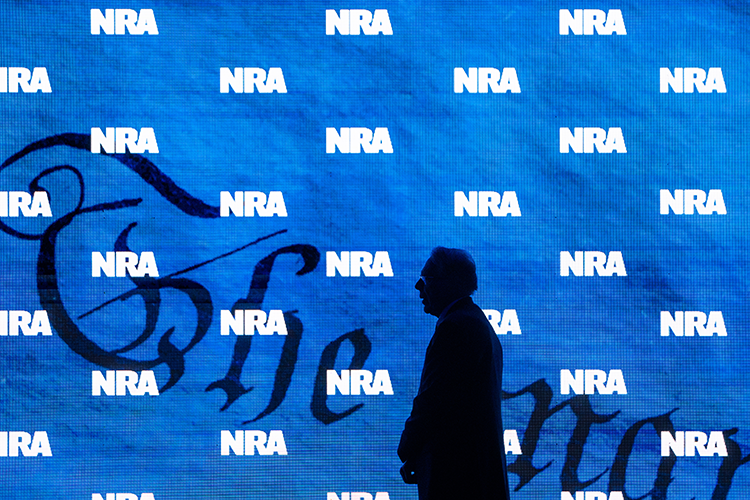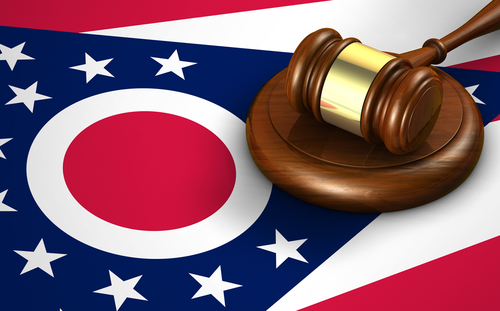SCOTUS rulings on election districting likely to affect who’s going to Congress in 2025
U.S. Supreme Court
Two recent rulings of the Supreme Court—one on its “shadow docket” and the other a decision on the merits—again revealed the deep division among the justices with regard to issues concerning voting and the electoral process. Each was decided by a 6-3 margin, with the familiar ideological split among the current justices, and each will have significant consequences for our political system in making it harder to bring challenges to the drawing of election districts.
Robinson v. Callais
On May 15, in Robinson v. Callais, the court granted an emergency stay to litigation concerning a Voting Rights Act challenge to the drawing of congressional districts in Louisiana. The result is that for the 2024 elections there will be two congressional districts in Louisiana, out of six, that have a majority Black population. With a House of Representatives that is closely divided between Democrats and Republicans, even one additional likely seat for Democrats could be decisive. Although this is at least a temporary victory for the voting rights plaintiffs, the case was 6-3, with the liberal justices in dissent.
The order issued by the court simply said: “The applications for stay presented to Justice Alito and by him referred to the court are granted. See Purcell v. Gonzalez, 549 U. S. 1 (2006).”
Purcell v. Gonzalez was a Supreme Court order, also handed down without briefing or oral argument. In Purcell, the federal court of appeals had found that an Arizona law requiring photo identification for voting violated the Constitution and stopped the law from going into effect. But the Supreme Court allowed the Arizona law to go into effect for the election and said, “Given the imminence of the election and the inadequate time to resolve the factual disputes, our action today shall of necessity allow the election to proceed without an injunction suspending the voter identification rules.”
The constitutional basis for this never has been explained by the Supreme Court. Why should unconstitutional or illegal restrictions on voting be in effect just because the challenge is being heard soon before the election? Nonetheless, the court has invoked Purcell v. Gonzalez many times as establishing that federal courts cannot enjoin state and local election laws soon before an election even when the judges conclude that the Constitution is being violated.
For example, in Republican National Committee v. Democratic National Committee (2020), a federal district court in Wisconsin issued an order five days before the scheduled election that absentee ballots mailed and postmarked after election day, April 7, still would be counted so long as they were received by April 13. The judge issued this order because of the dramatic increase in absentee ballots in April 2020 at the height of concern over the COVID-19 pandemic. Wisconsin law had previously required that ballots be received by election day. The Supreme Court overturned this order and said that extending the date by which ballots may be cast by voters for an additional six days after the scheduled election day “fundamentally alters the nature of the election.” The court invoked Purcell v. Gonzalez and said, “This court has repeatedly emphasized that lower federal courts should ordinarily not alter the election rules on the eve of an election.”
In Allen v. Milligan, in 2022, the court again invoked the Purcell principle and stayed a ruling of a three-judge federal court that Alabama had violated the Voting Rights Act and allowed a congressional map that was found to be discriminatory to be used in the 2022 election. The court relied on Purcell even though it was weeks before the primary election and many months before the general election. When the court decided the merits in Allen v. Milligan in June 2023, the court affirmed the lower court and found that Alabama had violated the Voting Rights Act.
In Robinson v. Callais, on May 15, the three liberal justices dissented even though the effect of the court’s order was to create an additional majority Black congressional district in Louisiana. Their objection was the application and what they saw as the extension of Purcell. Justice Ketanji Brown Jackson wrote a dissenting opinion and explained: “In my view, Purcell has no role to play here. There is little risk of voter confusion from a new map being imposed this far out from the November election.” The concern of the dissenting justices is that the Supreme Court was extending Purcell from being about judicial review on the eve of an election to barring court relief even many months before the election.
Alexander v. South Carolina State Conference of the NAACP
The Supreme Court has consistently held that equal protection is violated if race is used as a primary motivation in drawing election districts. But the court, in Rucho v. Common Cause in 2019, held that partisan gerrymandering—drawing election districts to preserve safe seats for a political party—cannot be challenged in federal court because it is a nonjusticiable political question.
The problem in applying this is that there often is a strong correspondence between race and political party, as in some states Black individuals vote Democratic over 90% of the time. How then is it to be decided whether the election districts were based on race or party?
That was the issue in Alexander v. South Carolina State Conference of the NAACP, decided on May 23. A three-judge federal district court had found that race was the predominant motive in drawing congressional districts in South Carolina. The Supreme Court, in a 6-3 decision, with the majority opinion written by Justice Samuel Alito, reversed the lower court.
The court found that the fact finding by the three-judge federal court was clearly erroneous and that it failed to give sufficient weight to the “presumption that the legislature acted in good faith.” The court said to demonstrate that race, rather than party, was the predominant goal in districting, “a plaintiff must prove that the State subordinated race-neutral districting criteria such as compactness, contiguity and core preservation to ‘racial considerations.’”
The court said that the lower court’s decision was “clear error” because the plaintiffs “provided no direct evidence of a racial gerrymander, and their circumstantial evidence is very weak.” Justice Alito said that the lower court failed to “rule out the possibility that politics drove the districting process.”
Justice Clarence Thomas wrote an opinion concurring in part and urged a dramatic change in the law: He would not allow equal protection challenges to election districts even on the grounds that they were impermissibly drawn to discriminate based on race. He wrote: “In my view, the court has no power to decide these types of claims. Drawing political districts is a task for politicians, not federal judges. There are no judicially manageable standards for resolving claims about districting, and, regardless, the Constitution commits those issues exclusively to the political branches.”
Under Justice Thomas’ approach, no longer would federal courts be able to hear constitutional challenges of any type against how election districts were drawn.
Justice Elena Kagan wrote a vehement dissent, joined by Justices Sonia Sotomayor and Brown Jackson. Justice Kagan emphasized the care with which the three-judge court had considered the case over the course of a year, including a nine-day trial. The dissent objected to the majority’s failure to follow the usual deferential approach to clear-error review. Justice Kagan lamented: “Perhaps most dispiriting is what lies behind the court’s new approach—its special rules to specially disadvantage suits to remedy race-based redistricting.”
Justice Kagan’s concern is that the court’s decision will make it much harder to challenge the impermissible use of race in drawing election districts. She concluded her dissenting opinion: “It will be easy enough to cover your tracks in the end: Just raise a ‘possibility’ of non-race-based decision-making, and it will be ‘dispositive.’ And so this ‘odious’ practice of sorting citizens, built on racial generalizations and exploiting racial divisions, will continue. In the electoral sphere especially, where ‘ugly patterns of pervasive racial discrimination’ have so long governed, we should demand better—of ourselves, of our political representatives, and most of all of this court.”
Conclusion
Each of these rulings is likely to matter in the composition of the Congress that will be seated in January 2025. What these rulings share in common is that they will make it harder to bring challenges to election districts in the future. Robinson v. Callais will require that challenges be brought and decided much earlier to avoid the Purcell principle. And Alexander v. South Carolina State Conference of the NAACP will make it harder to challenge election districts as impermissibly based on race.
Erwin Chemerinsky is dean of the University of California at Berkeley School of Law and author of A Momentous Year in the Supreme Court. He is an expert in constitutional law, federal practice, civil rights and civil liberties, and appellate litigation. He’s also the author of The Case Against the Supreme Court; The Religion Clauses: The Case for Separating Church and State, written with Howard Gillman; and Presumed Guilty: How the Supreme Court Empowered the Police and Subverted Civil Rights.
This column reflects the opinions of the author and not necessarily the views of the ABA Journal—or the American Bar Association.






